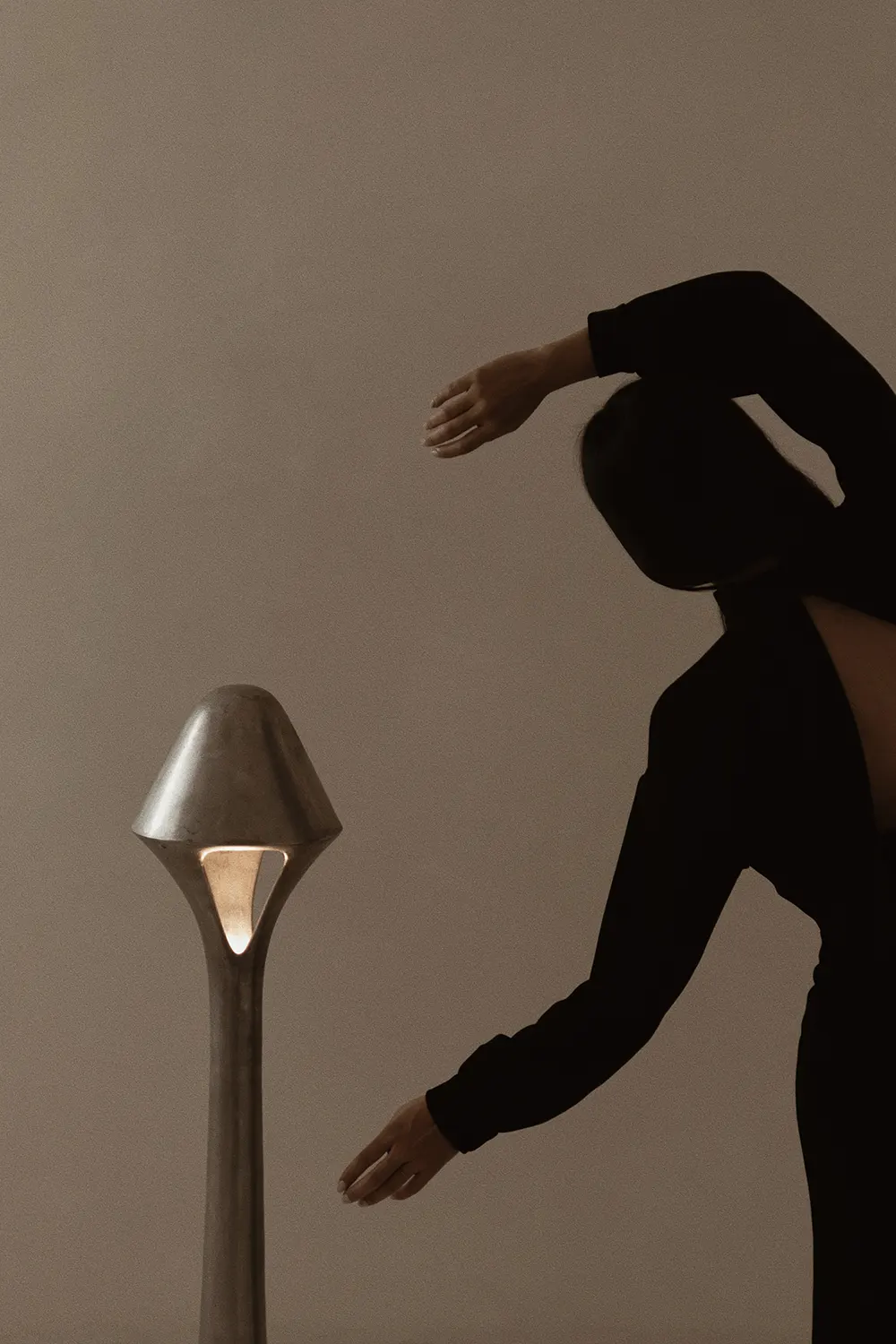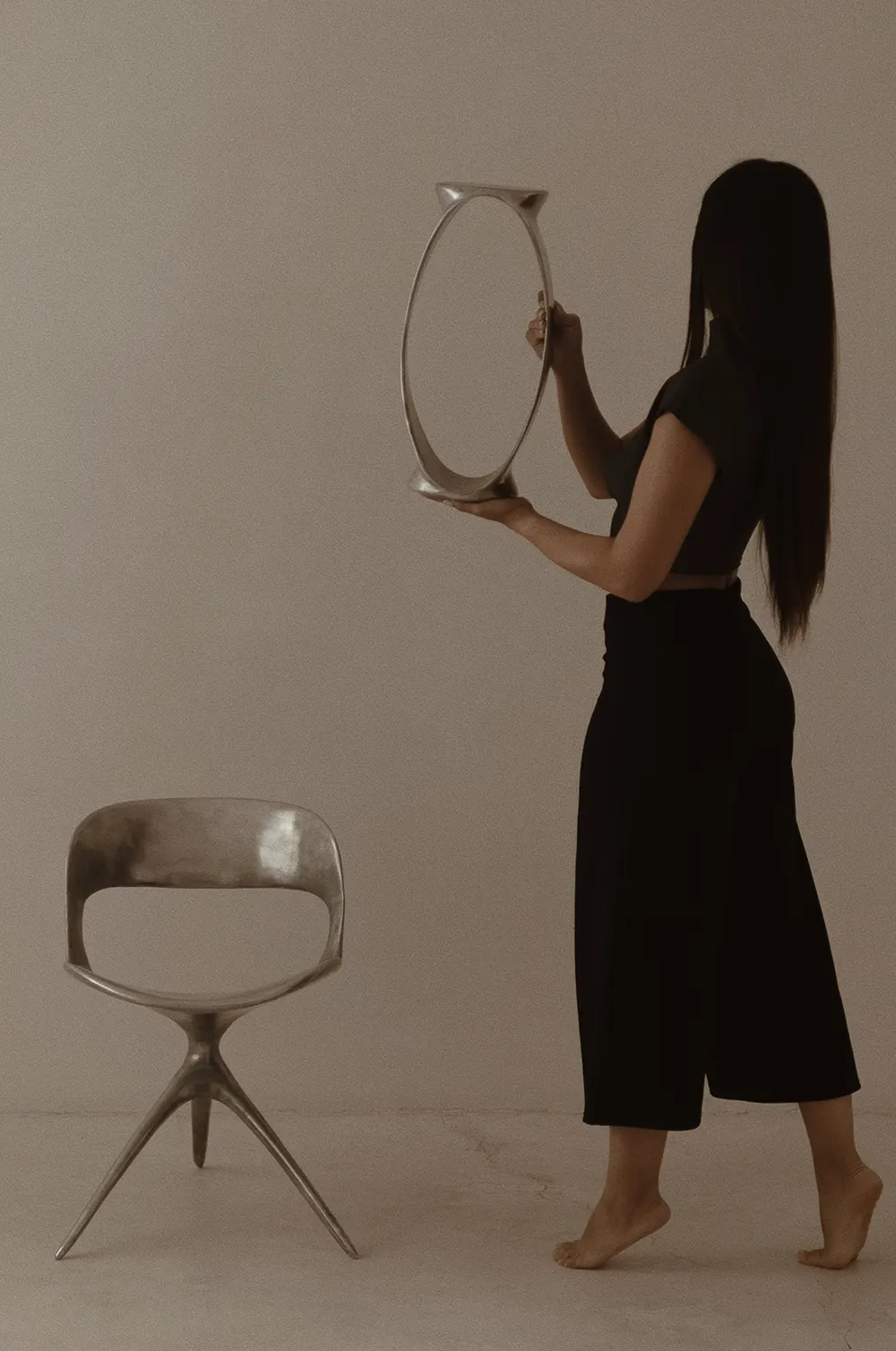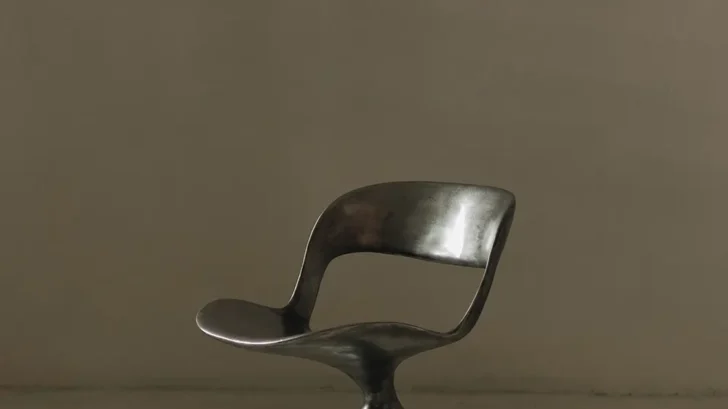
Sebastián Angeles brings sound into form with the Frequency collection, a sculptural study of emotion, rhythm, and sensory experience. In conversation with ARCHISCENE editor Katarina Djoric, Angeles shares how each piece channels a specific Hz frequency tied to meditative or emotional states, transforming invisible energy into physical design. From cymatic patterns informing the structure of the 432 Hz lounge chair to forms rooted in purity or ascension, the collection explores what we feel but can’t always see.
Crafted primarily in bronze and shaped through traditional Mexican casting techniques, the pieces move between symbolism and function with quiet intention. Angeles approaches design as ritual, an invitation to reconnect with stillness, reflection, and presence. His intuitive process centers on meaning and sensory depth, offering objects that carry emotional weight through touch, form, and frequency.

What first drew you to the idea of translating frequencies into physical forms?
I’ve always been inspired by intangible elements – the things we feel but can’t see. The idea of giving form to the invisible has fascinated me for as long as I can remember. Frequencies are all around us; they connect us, move us, and influence our state of being. So translating that energy into physical objects felt like a powerful concept to explore.
Each piece references a specific Hz frequency tied to emotional or spiritual states. How did you decide which frequencies to work with?
The choice of each frequency stemmed from a desire to represent emotions and inner states through objects. For example, I associate purity with light, or the feeling of ascension in meditation with the seated posture – which naturally led to the idea of a chair. It could have been other objects, but I chose forms that resonated with specific emotions. In a way, each piece is a physical embodiment of a particular state of being.


Your 432 Hz lounge chair references cymatic patterns. Can you talk about how these visual representations of sound informed the design?
When I studied cymatic patterns, I noticed a recurring elongated curve that appeared symmetrically and branched into three directions. That led me to a tripod-like leg structure. My process involved stretching and visualizing these patterns in three dimensions. I love translating gestures or abstract patterns into objects. My design approach is not literal; it’s about expressing a concept through form, and this was an incredible exercise in abstraction.
You’ve chosen bronze as a key material in the collection. What does this metal bring to the emotional and tactile qualities of the objects?
Interestingly, bronze has healing properties when in contact with the body, but that was more of a beautiful coincidence. My main focus is always the form – how to express my vision through lines and shapes. The choice of material is a way to realize those forms. Bronze is incredibly strong, versatile, and capable of capturing complex shapes, making it the perfect material for such challenging silhouettes. It allowed me to push the boundaries of what I could sculpt.

The collection feels deeply rooted in both sensory experience and symbolism. Do you see your work as a kind of functional ritual?
Absolutely. The collection was designed to create a meditative ritual – a way to connect with frequencies, with objects, and with the present moment. This project perfectly embodies what I love to design: objects filled with meaning that can connect with people on multiple levels. The pieces draw people in through their aesthetics, but once they understand the story and symbolism behind them, the relationship becomes deeper. I wanted to create future relics – objects that hold lasting emotional value.
Metal casting in Mexico has such a rich history. How do you balance honoring tradition with pushing design in new directions?
As a Mexican designer, I have access to an incredible heritage of crafts and techniques. My creative journey has been about reinterpreting these traditions and finding new ways to work with ancestral practices. The dialogue between the artisan and me is always enriching – it’s a mutual exchange of knowledge that opens the door to experimentation and unexpected results. That’s where innovation really begins.


You speak about sound as a tool for healing. Do you believe design can hold the same restorative power as sound therapy?
I’m not sure design has the power to heal in the same direct way as sound therapy, but I do believe it can help us reconnect with our feelings and thoughts. We live in a time of constant immediacy – rarely do we pause or reflect. Objects give us identity, and they can also ground us. A collection like this invites people to explore healthy habits, like meditation or an interest in sound science. My intention is for my work to resonate in someone’s life – whether by encouraging a deeper appreciation for personal objects or inspiring emotional awareness through sensory design.
The sculptural quality of your work suggests a strong dialogue between form and philosophy. What role does intuition play in your creative process?
Intuition plays a huge role. Many ideas emerge gradually through the process – through observation, trial, and coincidence. For me, it’s very difficult to design a shape without meaning. If there’s something that inspires me deeply, the process becomes more fluid and more meaningful. My exploration begins with a concept – something intangible I want to express – and form becomes the language I use to tell that story.

How do you want people to feel when they interact with the Frequency pieces – physically, emotionally, and spatially?
I want people to connect emotionally – whether it’s through the curiosity the objects spark or the mood they create. I imagine the pieces in a contemplative space, but fully functional. Many were surprised to learn the objects could actually be used. Perhaps the complex forms led them to believe otherwise, but comfort was essential to me. A lot of energy and care went into crafting these objects, and their durability demanded they be as usable as they are beautiful. Watching people experience the unexpected comfort of these unusual surfaces was one of the most rewarding moments for me.
What are you exploring next? Are there other elements like scent or movement you’d like to bring into your sensory-driven design approach?
I’m not sure if this collection is finished – there might be more frequencies to explore. But my next work will continue this journey of translating the intangible into something meaningful. Whether it’s movement, scent, or another sensory layer, I’m always searching for new ways to communicate deep, often unseen ideas through design.



